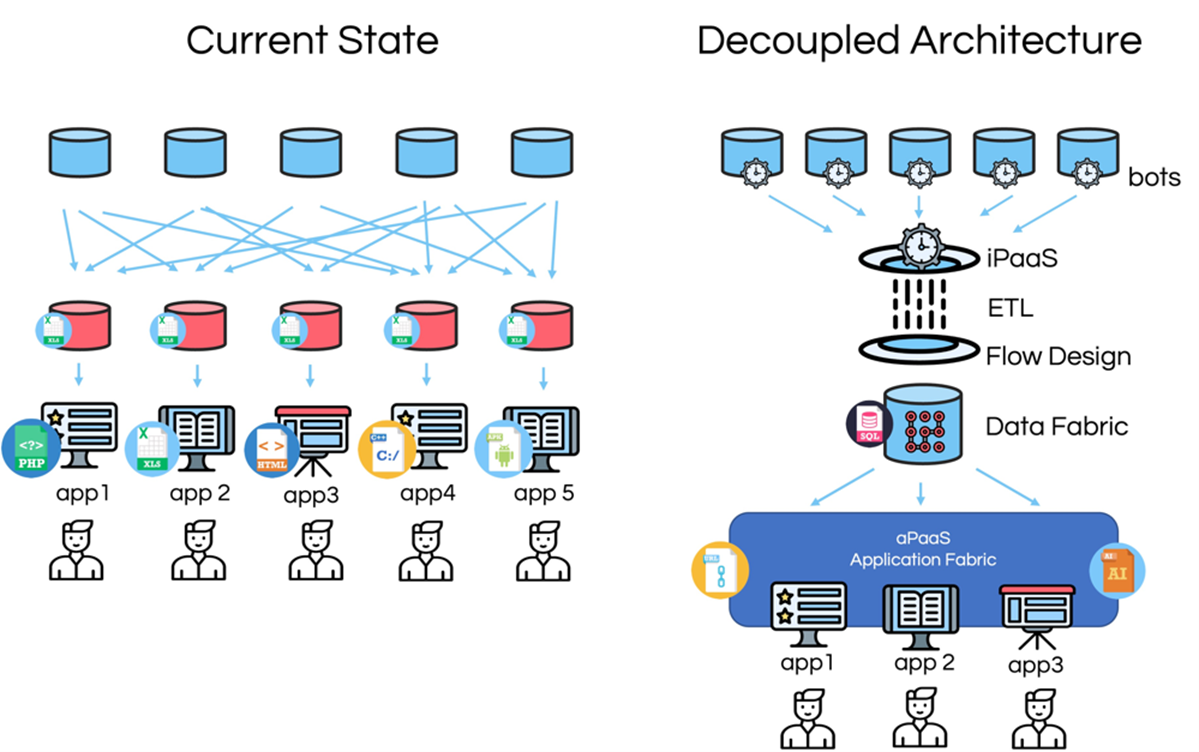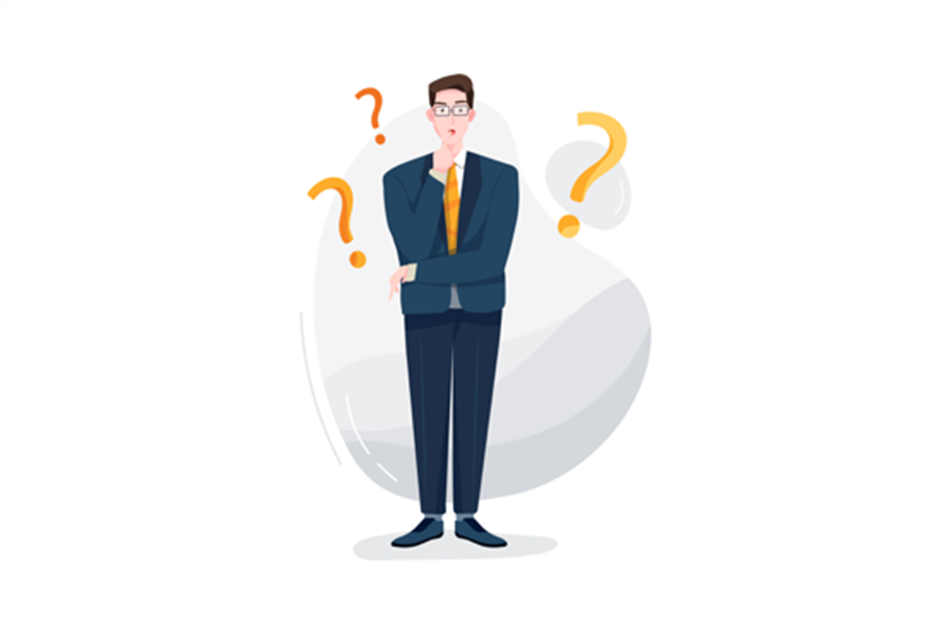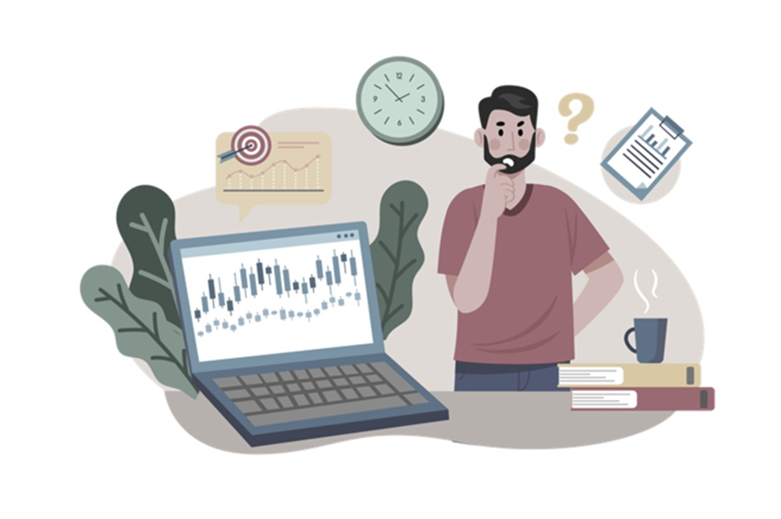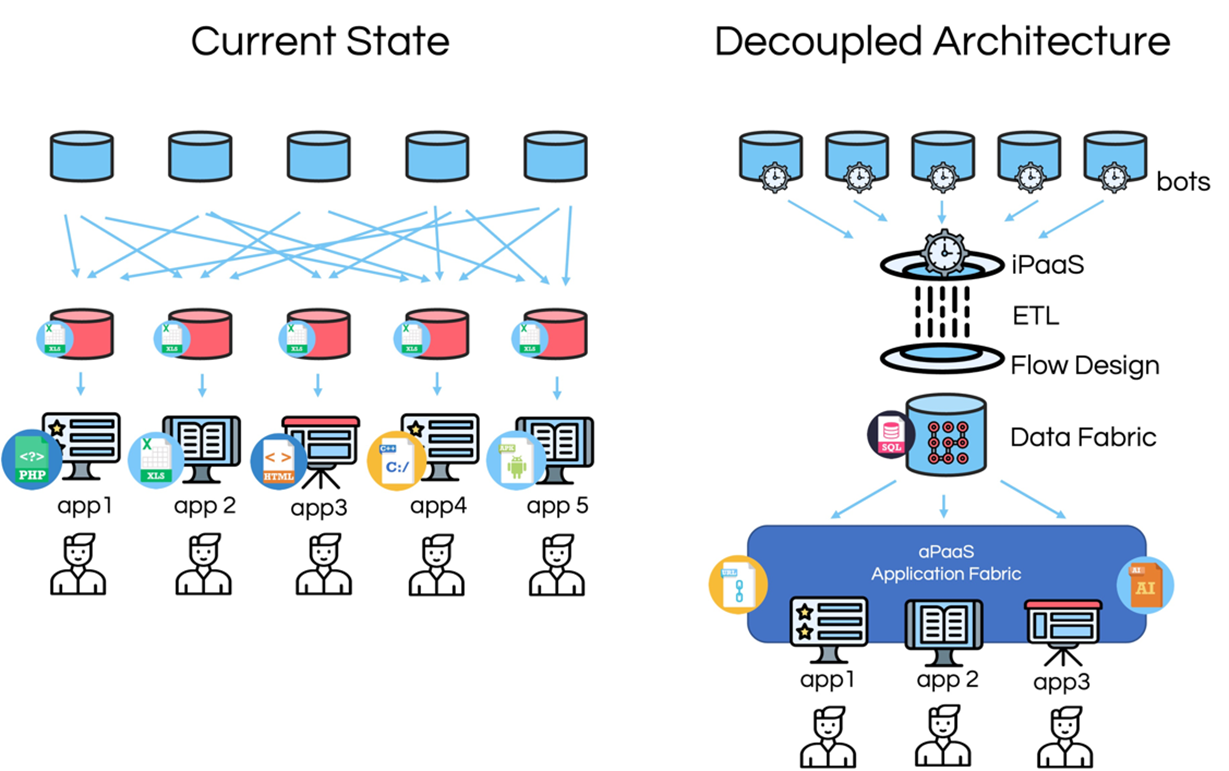Building enterprise software has never been easier thanks to advances in cloud Low-Code, No-Code, and Codeless aPaaS applications platforms.

Why Clustered Private Clouds Trump Public Cloud Solutions
Why Clustered Private Clouds Trump Public Cloud Solutions
The Next Evolution of Cloud Computing
Written by Ian C. Tomlin | 23rd March 2024
Public cloud solutions have been a game-changer, but for many businesses, they fall short in key areas. Clustered private clouds offer a compelling alternative, providing a unique blend of security, control, and scalability that public clouds simply can’t match. In this article, we explain why CIOs should consider making the switch.
A clustered private cloud architecture employs containerized ‘cloud spaces’ to house apps, bots and portals. This aids in the design, deployment, support and ongoing management of the deployed cloud architecture. In the case of Encanvas Secure Clouds, each container can be easily created, configured, replicated and scaled using an administrative cockpit where all attributes are specified not coded. The use of a no-code approach de-skills administrative tasks, removes risks of coding errors, and accelerates adoption and changes.
A clustering architecture permits the creation of hierarchical structures so that, for example, channel partners can white-label solutions they offer to their customers. It also means a private cloud architecture spanning tens, hundreds if not thousands of individual cloud spaces, apps, bots and portals can be governed from a single support PC through a single browser session.
Advantages over Public Cloud Architectures include:
Ultra-Safe for Data
Public clouds offer a shared infrastructure, which can raise security concerns. Clustered private clouds, on the other hand, create hundreds or even thousands of secure, isolated data centers within your own infrastructure. With a clustered cloud architecture from Encanvas, your apps, portals, and bots reside in their own ultra-secure data vaults – that’s the power of clustered private clouds.
Effortless Scaling on Demand
Public cloud scaling can be cumbersome and expensive. Clustered private clouds offer dynamic resource allocation. Need to replicate an app you have already authored for another client? Simply replicate and adapt the secure space it resides in. you can even determine whether to include the canvases, application logic, data structures, data, endpoints, plug-ins, user accounts, (etc.) …or not. This on-demand scalability ensures your IT infrastructure seamlessly adapts to your business needs.
Long Term Cost Efficiency
Public cloud costs can be unpredictable and prone to hidden fees such as scaling upgrade costs. Encanvas clustered private clouds provide predictable expenditure because you only pay a flat fee for the platform. Furthermore, our platform upgrades are FREE FOR LIFE. Depending on the hosting approach you take, you can also elect to own the hardware and software, eliminating ongoing subscription fees. What’s more, the efficient resource utilization within a cluster can significantly reduce IT costs.
Unparalleled Performance and Resource Management
Clustered private clouds dedicate resources to your applications, leading to faster processing speeds and a smoother user experience compared to public cloud solutions. Additionally, clustered environments streamline application deployment and management, accelerating your digital transformation initiatives.
Compliance Made Easy
Certain industries have strict data residency and access regulations. Clustered private clouds allow you to tailor your environment to meet these specific compliance requirements. You can ensure your data stays within your organization’s boundaries, addressing any potential security or regulatory hurdles. Additionally, with Encanvas, every activity and event covering any aspect of our secure private cloud can be logged and reported. This allows organizations to use our no-code authoring tools to build out their own custom governance scorecards and operational risk management apps in no time at all.
Final Thoughts
Public clouds have their place, but for businesses seeking a secure, scalable, and cost-effective IT solution, clustered private clouds stand out. By leveraging this innovative architecture, CIOs can empower their businesses with the agility and control needed to thrive in today’s data-driven world.
Get in touch to learn more.









